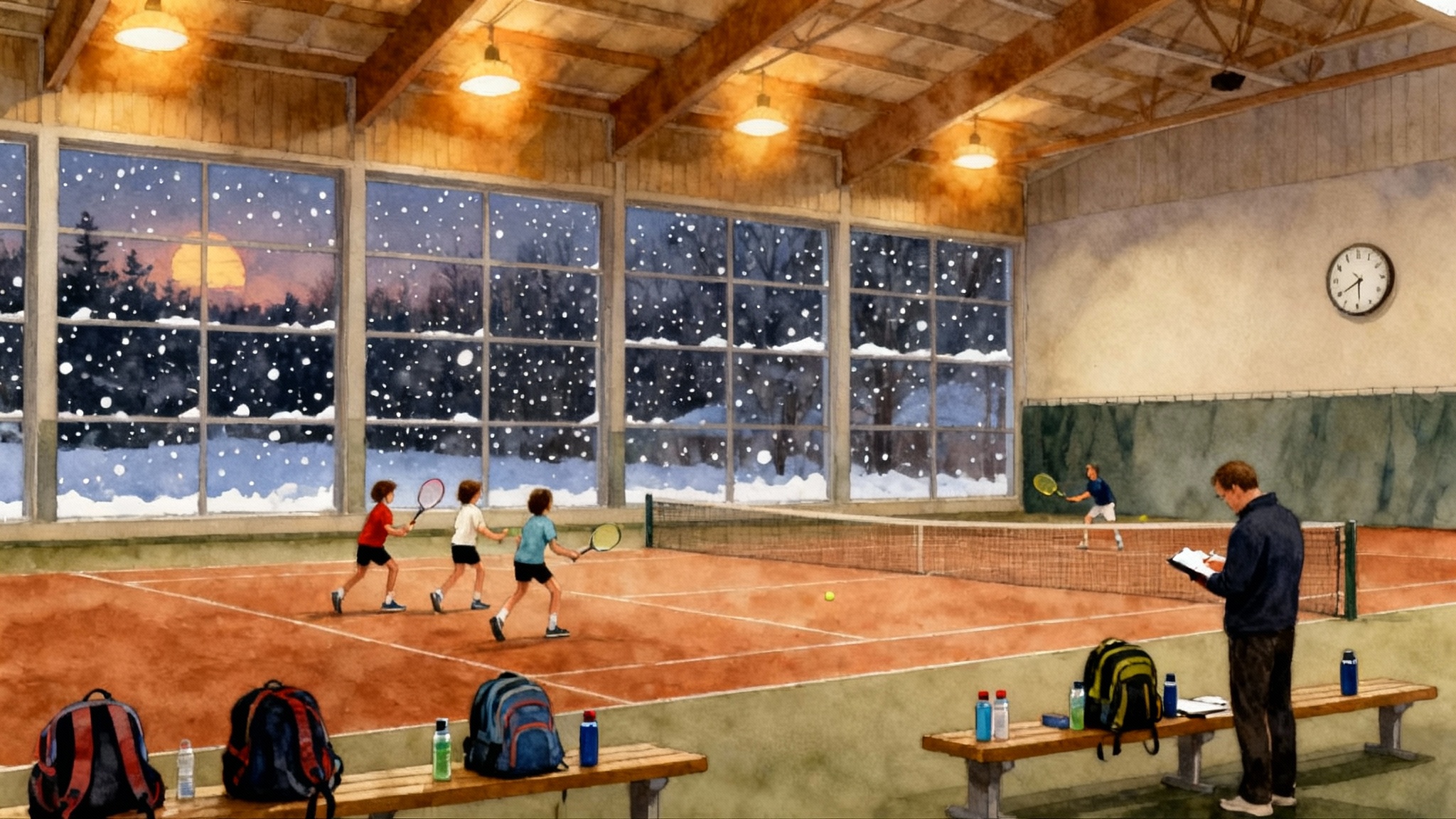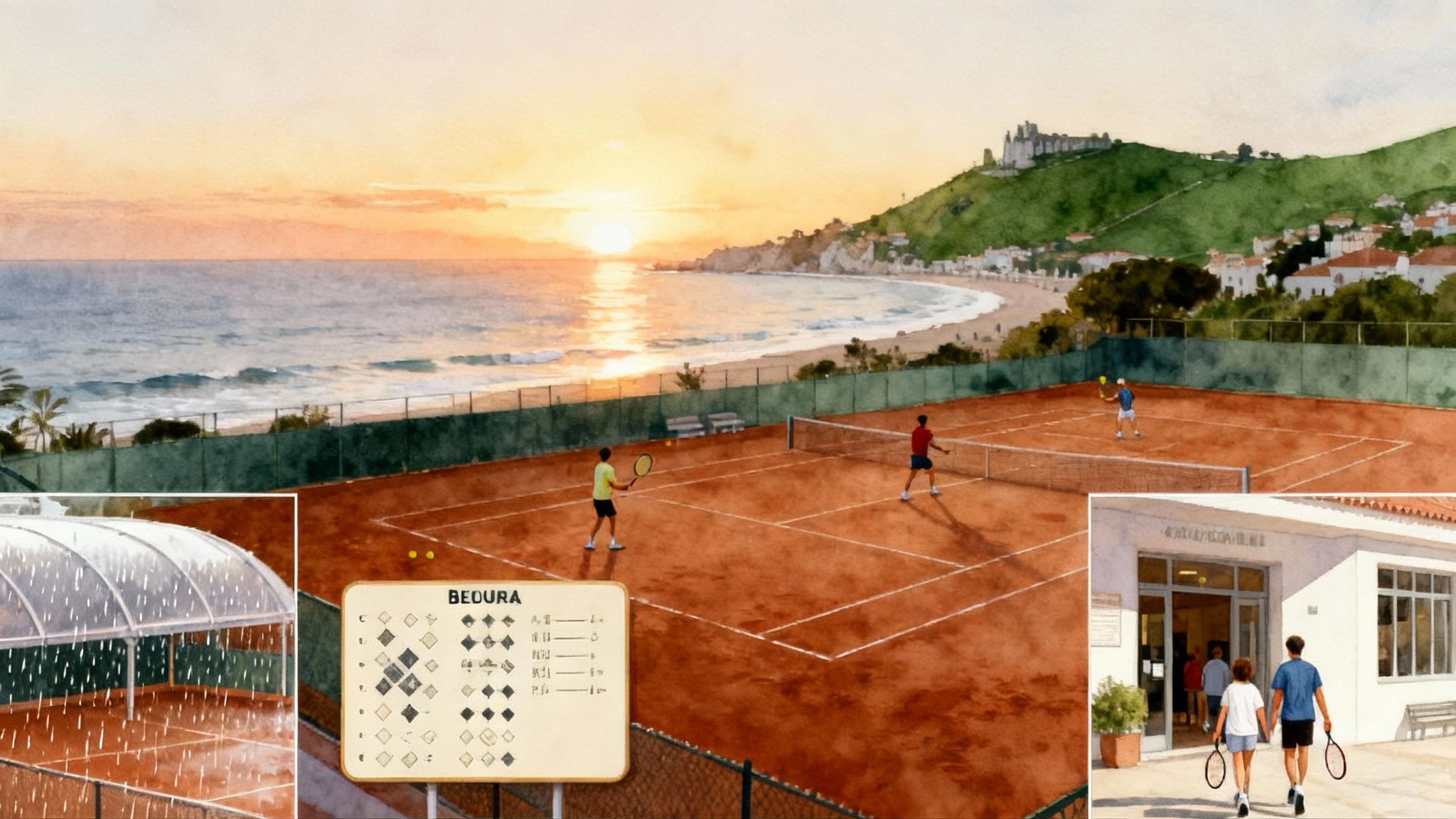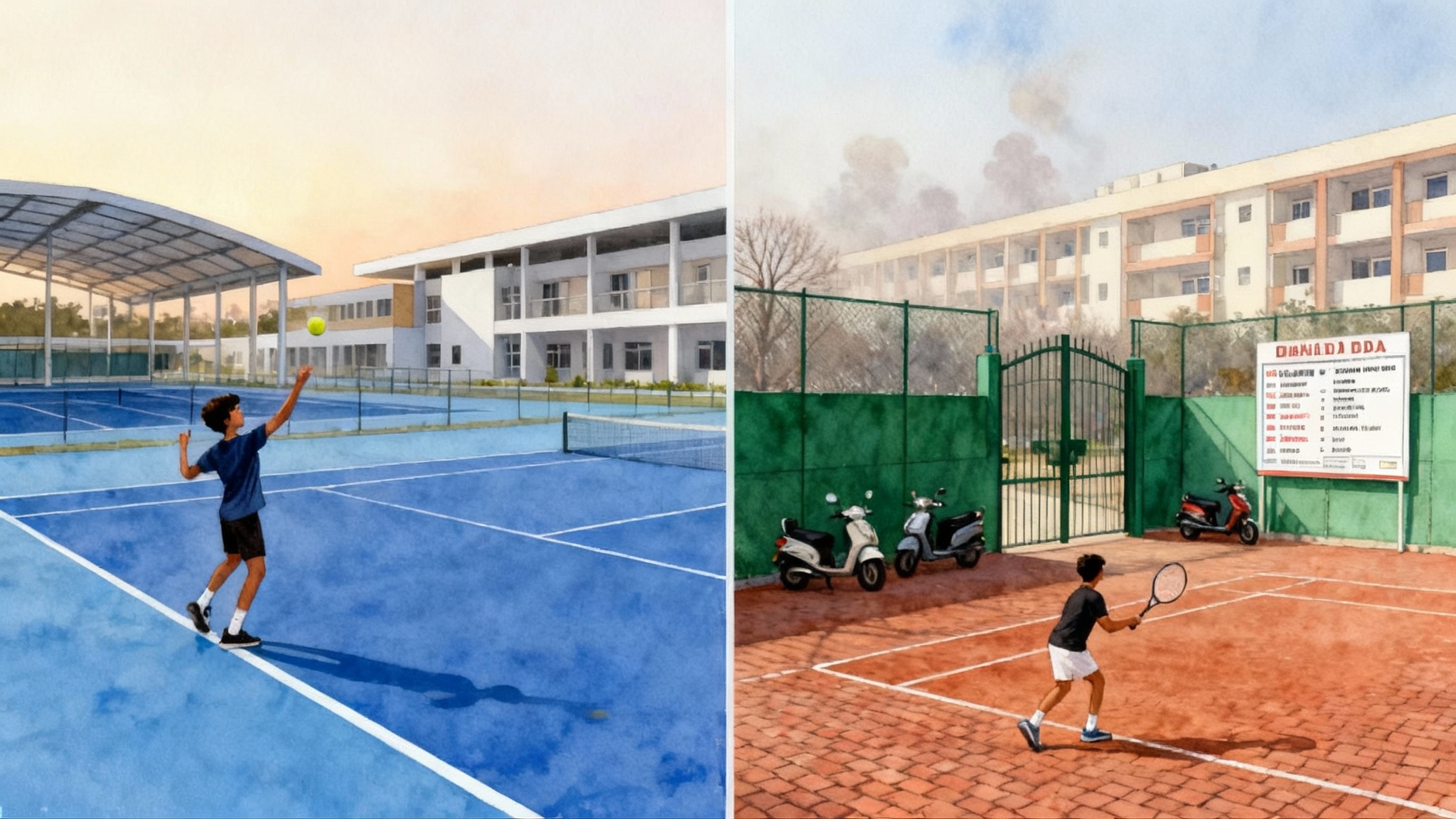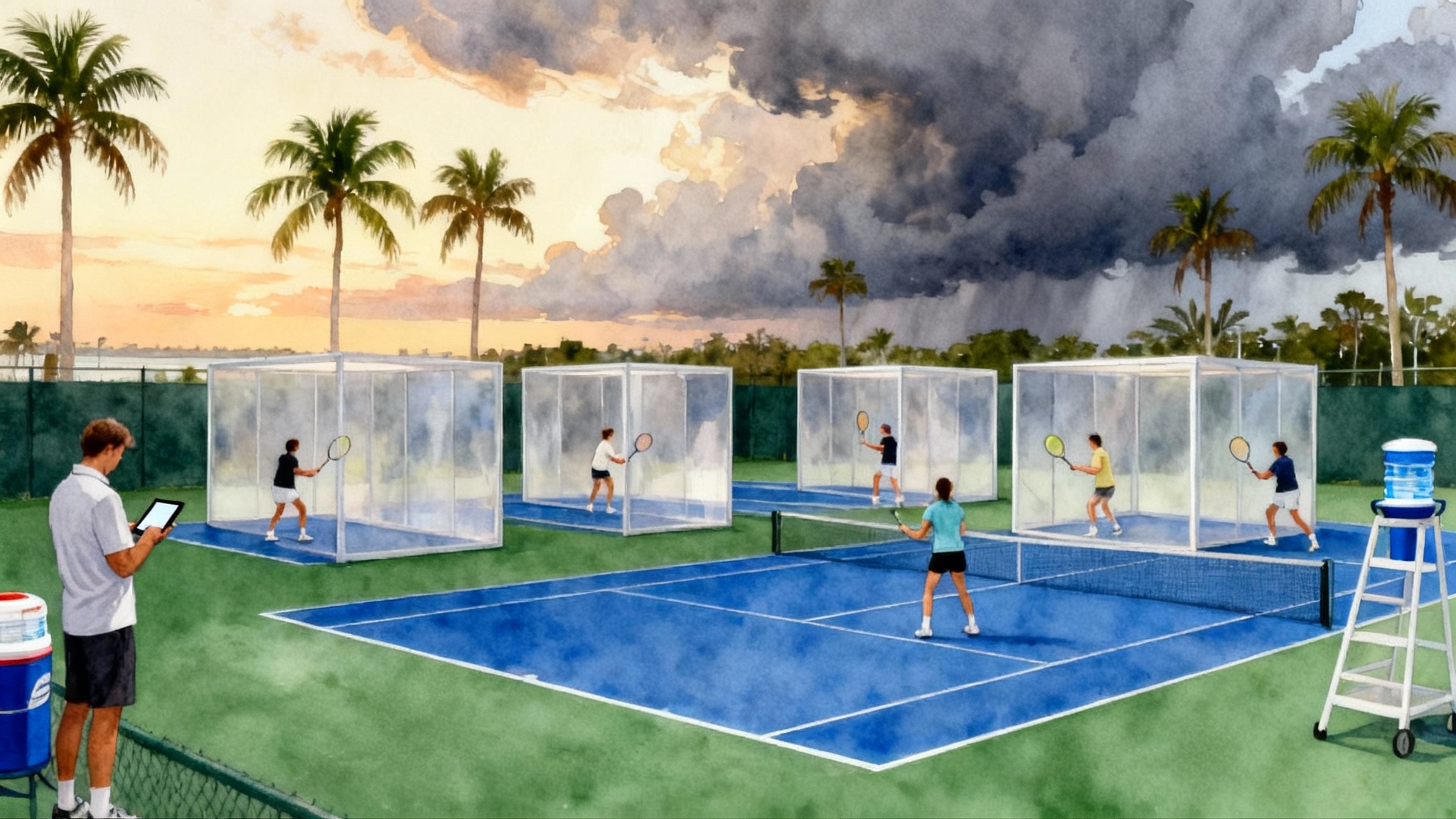Chicago’s Best Tennis Academies 2025–2026 Enrollment Guide
From Midtown and XS Tennis to park district hubs in the suburbs, this timely guide compares Chicago area academies by winter indoor access, coaching, UTR and USTA pathways, pricing transparency, and tryout options, plus a month-by-month sign up plan.

Who this guide is for
If you are a parent, junior player, or adult competitor in the Chicago area planning the 2025 to 2026 training year, this guide is designed to help you enroll with confidence. We compare top performance and community academies on what matters most in Chicago winters: reliable indoor court time, coaching quality, competitive match pathways through Universal Tennis and United States Tennis Association, links to schools, commute zones, pricing transparency, and trial or tryout options. We close with a calendar from November 2025 through August 2026 and a clear plan for different ages and goals. If you are also researching other markets, see our New York City tennis academies guide and our Los Angeles and Orange County academies overview.
How we evaluated Chicago academies
Here are the criteria families tell us determine a good fit in the city and suburbs:
- Winter indoor access: Court supply drops when the weather turns. Prioritize facilities with many indoor courts, early morning and after school blocks, and backup scheduling for snow days.
- Coaching quality: Look for directors with a track record developing varsity and college players, assistants who actively feed live balls and track progress, and a progression for green ball to yellow ball that is specific and timed.
- UTR and USTA pathways: You want predictable ladders of play, rating-based Universal Tennis events and United States Tennis Association ranked tournaments. When an academy hosts in-house match days, local level tournaments, and takes teams to travel events, players improve faster. See the USTA junior pathway for how ranking and progression work.
- School partnerships: Chicago Public Schools, Catholic League, and suburban high school schedules are tight. The strongest academies coordinate preseason captains practices, weekend team tune ups, and test week flexibility.
- Commute zones: Chicago traffic shapes training. We mapped options for three zones: City, North Shore, and West or Northwest Suburbs.
- Pricing transparency: Families should be able to see session rates, membership requirements, and what is included in a performance package. Clubs that publish schedules and rates save you weeks of calls.
- Trial or tryout options: A 30 to 60 minute evaluation, or a single drop in at the training level you aim for, is the fastest way to confirm fit.
Quick map by commute zone
Below are the hubs most families consider first when balancing commute with program depth. Use this as a starting shortlist, then schedule an evaluation and watch a session. For families near the state line, a community-first option across the border is Milwaukee Tennis & Education Foundation.
City of Chicago
- Midtown Athletic Club Chicago, Bucktown area. Large indoor inventory, high school and college placement track, adult NTRP ladders.
- XS Tennis and Education Foundation, Washington Park. Community anchored performance pipeline, strong after school model, scholarships and team travel for qualifying juniors.
- McFetridge Sports Center, Irving Park. Chicago Park District indoor center with broad junior pathway and budget friendly options.
Why these work: reliable winter courts, a wide ability range on court at any hour, and consistent match play from orange ball through varsity. City families value that Midtown tends to run early morning and late evening, XS Tennis pairs academics with training, and McFetridge serves as a public gateway with clinics, ladders, and weekend play.
North Shore
- College Park Athletic Club, Bannockburn area. Historically deep junior performance and collegiate placement, many indoor courts.
- Glenview Tennis Club, Glenview Park District. Community pricing, clinics across all stages, reliable in-house match days.
- Wilmette Tennis Club, Wilmette Park District. Junior development track that feeds local high school teams, strong adult leagues.
Why these work: short commutes from Wilmette, Winnetka, Northfield, Deerfield, and Highland Park, plus a balance of performance and community programs. College Park is a common choice for high performance, while park district clubs keep costs predictable and close to home.
West and Northwest Suburbs
- Heritage Tennis Club and Forest View, Arlington Heights Park District. Linked centers with broad junior and adult offerings, frequent in-house competition.
- Centre Court Athletic Club, Hanover Park. Indoor availability, travel team culture, and adult leagues.
- Naperville Tennis Club, Naperville. Deep junior pathway, family friendly schedule, and summer camp depth.
- Score Tennis and Fitness, Countryside. Performance blocks for serious tournament players and fitness integration.
- Vaughan Tennis Center, Aurora. City run complex with strong community pricing and court supply.
Why these work: parking is easy, the commute from District 204, District 203, and northwest Cook or Kane County is manageable, and match volume is high year round.
The short list: standouts to start your research
Every family should build a local shortlist, then compare two private and two public or park district options. Here is a balanced starting point by zone.
- City: Midtown Chicago, XS Tennis, McFetridge Sports Center
- North Shore: College Park Athletic Club, Glenview Tennis Club, Wilmette Tennis Club
- West or Northwest: Heritage Tennis Club, Naperville Tennis Club, Vaughan Tennis Center, Score Tennis and Fitness
What to look for when you tour:
- Indoors in January, count courts, then ask how many are dedicated to junior academy blocks at 4 to 9 p.m. Monday through Friday.
- Ask for coach to court ratios by level, for example red ball 6 to 1, yellow ball performance 4 to 1, and whether live ball and point play take at least 40 percent of time.
- Confirm weekly match play is included or discounted, and how your player’s Universal Tennis Rating or USTA standing is tracked over the season.
Enrollment calendar: November 2025 to August 2026
Use this month by month plan to secure spots and match play. The dates reflect typical Chicago registration cycles. Always confirm your academy’s session start and holiday breaks.
- November 2025: Winter 1 sessions start or are underway. If you need a spot, ask for mid session entry and book a formal evaluation. Reserve private lesson standing times through February. Identify two tournament weekends between Thanksgiving and New Year’s for match reps.
- December 2025: Holiday camps fill quickly. If you cannot travel for tournaments, book two half day camp blocks to build volume. Audit goals for 2026: a higher UTR, a USTA sectional ranking, or varsity season readiness.
- January 2026: Winter 2 session registration opens at many clubs in mid month. Lock your days and secure indoor practice courts for weekend hitting. If you are college bound, set a video day to film live points and a short skills reel.
- February 2026: Commuter weather worsens. Set up backup carpools. Enter one universal rating event or USTA Level 6 to 7 each fortnight. Parents, schedule a ten minute check in with the lead coach to adjust drill to match play ratio.
- March 2026: High school boys season begins across much of the area. Players should shift to two academy days plus two match days per week. If you are not in season, this is a volume month; add a Sunday ladder.
- April 2026: Spring break camps, plus the start of outdoor transitions on better weather days. Ask how your academy balances indoor and outdoor time when the temperature swings from day to day.
- May 2026: Summer registration crunch. By mid May, reserve June and July camps, plus at least four tournament weekends. College bound juniors should finalize summer travel events and identify two showcase weekends.
- June 2026: Outdoor season ramps up. Confirm wet weather backup indoor times. For adults, join a summer team that fits your National Tennis Rating Program level and your work schedule.
- July 2026: Peak tournament month. Keep one recovery day weekly. If your player is twelve and under, split long weekends into two day entries to prevent burnout.
- August 2026: High school girls season begins for many. Lock fall academy blocks before orientation week. For everyone else, treat August as a mini preseason and rebuild the serve and return foundation before school routines return.
Choosing by age and goal
Red, orange, green ball, ages 5 to 10
- Your priority is consistency and fun that still teaches footwork and spacing. Choose an academy that keeps the ball in play with low compression balls and has a clear weekly plan for serve, rally, and score.
- Seek facilities with frequent play days, low stakes matches on Friday or Saturday afternoons, and short round robin formats.
Middle school, ages 11 to 13
- Look for two academy days plus one match play day. One private lesson every one to two weeks can fix grips, spacing, and patterns.
- Choose a commute you will actually keep. In winter, a twenty minute drive that runs all year beats a forty minute drive you skip once the snow hits.
High school varsity and college bound
- Your training mix should be two to three academy days, weekly match play, and targeted privates. Seek a head coach who has taken players to college and can outline a rating and tournament plan month by month.
- Ask for video analysis and data tracking. You want first serve percentage, return depth, and rally length tracked, not just general effort feedback.
High performance juniors
- Seek performance blocks that include strength and conditioning, mobility, and recovery. Morning blocks before school and early afternoon blocks for hybrid or flexible school schedules are a plus.
- Demand a transparent match plan. That means a calendar of Universal Tennis ladder events, verified rating matches, and United States Tennis Association levels chosen for development, not just points.
Adults
- Choose a club that runs level based live ball, plus a ladder that runs every week. Balance clinics with match play so you are not stuck at the same National Tennis Rating Program level.
- If you are returning to the game, put two six week blocks on your calendar and reassess after twelve weeks.
Pricing, membership, and transparency
Chicago families see three common pricing models, each with tradeoffs:
- Park district or city run centers: Lowest baseline cost, easy to understand seasonal pricing, and broad access. Court time may be tighter at peak hours, but transparency is high.
- Private clubs: Membership fees plus program fees. You get more flexibility, ball machine access, and fitness facilities. Ask for a line item quote that lists membership, guest fees, academy blocks, privates, and stringing or event fees.
- Boutique performance programs: Highest per hour rate, often with smaller groups and more individualization. Clarify what is included, for example match coaching, college placement support, and video.
Questions to ask every academy:
- Do you publish seasonal rates, and what are the additional costs families usually pay over a full year?
- What is the coach to player ratio by level, and who is on court for my player’s block each day?
- Do you guarantee make ups for snow days or illness, and how are they scheduled?
UTR and USTA match pathways, in plain English
Universal Tennis gives every player a daily updated rating based on verified matches, while the United States Tennis Association runs the tournament structure families use for rankings and progression. Together, they give you two ways to see progress and qualify for the right draws. Most Chicago academies offer in house rating events, travel to nearby tournaments, and help with sign ups. When in doubt, start with one local event every two weeks, then build to sectional events once your results stabilize. Later in the season, visit the Universal Tennis rating site to check your rating trend line and pick events that match your current level.
How to make the pathway work for you:
- Treat your rating and ranking like a compass, not a verdict. Use them to pick matches that are competitive and to set goals for the next four weeks.
- Keep match logs. Track opponent styles, your best plays at 30 all, and patterns you need to practice.
- Use ladders and verified match days at your academy to fill gaps between tournaments.
School partnerships and study support
Great Chicago programs understand bell schedules and homework. Ask whether the academy offers:
- Preseason varsity tune ups and captain led sessions for both boys and girls seasons.
- Early morning or last block options that fit block schedules and traffic patterns.
- Quiet study space between training and privates. A thirty minute study window keeps families sane during winter commutes.
Equity, scholarships, and community access
Families across the city need both community and performance pathways. Here is how to find support:
- Community based academies, including foundations and park district hubs, often run scholarship or sliding scale options. Ask how need is assessed, and whether match fees, travel costs, and strings are included.
- Many private clubs offer partial scholarships for strong students who commit to team practices and volunteer coaching hours. Ask who administers aid and how often decisions are made.
- Schools and booster clubs sometimes sponsor preseason blocks or tournament entry fees. Ask your athletic director about tennis specific support.
How to ask with clarity:
- Write a one page player profile with goals, recent results, and coach contacts. Include report cards and any school recommendations.
- Offer to volunteer at junior play days or community events. Programs value families who give back.
How to trial or try out with purpose
Turn an evaluation into a data point, not a vibe check.
- Before you go: Record ten minutes of cooperative rally, serves, and a two game set. Bring it on your phone so the coach can see your current patterns.
- During the session: Ask the coach to place you in the expected training group for the last twenty minutes; live points with that group tell you a lot.
- After the session: Ask for a two sentence summary, one strength to keep and one focus for the next four weeks. Book one drop in at that level to confirm the fit.
A two week evaluation plan you can copy
Week 1
- Tour two academies inside your commute zone.
- Book one evaluation at each, preferably on the same weekday and time for apples to apples traffic and energy comparison.
- Play one local ladder or match day to set a baseline.
Week 2
- Choose the better fit and book a second drop in at the exact group you would join, same time of day.
- Meet the lead coach for ten minutes. Ask for a four week plan: one match rhythm, one technical priority, and two fitness habits.
- If the plan is concrete, enroll for the next session. If it is vague, repeat the cycle with your second choice.
Common Chicago tradeoffs and how to solve them
- Commute vs program depth: If a high performance hub is forty minutes away, schedule it twice weekly, then use a nearby community club for a third day and local match play.
- Cost vs volume: Use park district clinics and ladders for volume, add one private lesson every other week for focus.
- Tournament calendar vs school: Put midterms, state testing, and varsity schedules on the calendar now, then pick events that fit the gaps. Consistency beats sporadic bursts.
Final takeaway
Winter in Chicago rewards families who plan with clarity. Pick a commute zone you can sustain, tour two to three academies that actually publish schedules, demand a match pathway and coaching feedback that is specific, and trust a simple pattern: two to three training days, one match day, a private lesson when you can. If you follow the month by month plan above, you will secure indoor court time before the deep freeze, your player will see steady rating growth, and by August 2026 you will have the only metric that matters: a confident player who wants to get back on court tomorrow.








